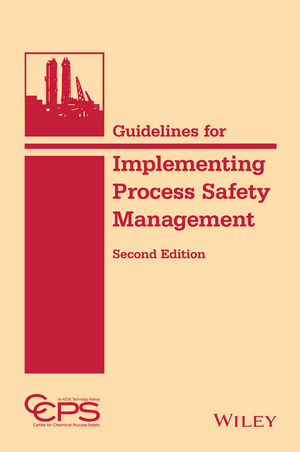As technology improves and changes, it is crucial to make sure procedures and practices are up-to-date, modern and match up with required safety standards. While many operators may favor the tried-and-tested approach, if it does not follow current safety procedures and standards, it should be amended to adopt or accommodate updated safety and operation procedures.
Once a process is built into your operation practices, it can be hard to change as a temporary interruption of the process may not seem worth the effort. However, optimizing and modernizing some of these processes can save you time, money and headaches in the long run. Some of the procedures in place may actually be slowing down your warehouse operations by reducing efficiency and adversely impacting employee workflow.
1. Managing Inventory with Paper Lists
Keeping track of inventory can be a daunting task, especially when you have a large variety of items to track. Goods leave and enter the warehouse in bulk all hours of the day, and keeping accurate inventory is essential to your bottom line.
Many warehouses have successfully developed operational procedures prior to modern technology and have managed such a process using clipboards and paper tracking. This can be effective when done right, but it is highly prone to human error. Papers can get lost or damaged, and inventory can be missed or added twice. Near Field Communication (NFC), RFID and other electronic technologies can check inventory in and out automatically, streamlining the process and minimizing paperwork.
2. Using Fax to Send, Receive and Communicate Information
While faxing was once a successful way to transmit and copy important documents, orders and information, many businesses no longer use fax machines or may not have access to them. Relying on a fax machine can deter potential new business, as well as slow down general operations.
Creating carbon copies and distributing the proper documents to the right parties can be handled electronically, and many websites offer secure integrative solutions to share, sign and authenticate paperwork. Have a scanner on-hand to scan paper documents and email them or keep them in cloud-based storage. Use encryption software or document management software to keep these documents secure.
3. Batching Orders Manually
Batching orders is a key part of any warehouse's operation, and it must be handled efficiently. Orders are located and retrieved from different parts of the warehouse using manual labor and heavy equipment such as forklifts or conveyor belts. Having each order batched manually is unnecessarily time-consuming and does not optimize your manpower.
Instead, use order picking phases to prioritize order batching according to their due date, lead time and their respective locations in the warehouse. That way, multiple orders can be batched and prepared together logically, minimizing the time and resources needed.
4. Using Manual Data Entry for Spreadsheets
Spreadsheets are often at the core of any warehousing operations and must be updated regularly. Inventory, financial statements, sales, purchase orders and a number of other pieces of data change daily.
While many warehouses may have an employee or multiple employees handle such tasks, leveraging automation can help connect core spreadsheets to management platforms, POS software, eCommerce sites and other tools that manage your operations. This can reduce the load on manual labor, as most of the data entry is automated and only one or two people need to oversee the accuracy of the spreadsheet.
5. Using Outdated Equipment
Replacing machinery and hardware is not cheap. Some companies are tempted to keep their machinery long past their prime, simply because it's very costly to replace. New technology also necessitates time for employee training, which is an additional investment.
However, this could end up costing more and decreasing efficiency in the long run. Older equipment has a higher risk of operating incorrectly or malfunctioning, possibly causing damage, injury or death. Using old technology on machines means you may not be delivering the best products to your customers–or as efficiently as you could.
Consider looking into slightly used or refurbished machinery for a more affordable option. Ensure your machines and equipment are maintained, repaired and updated as needed.
6. Running Processes That Are Hazardous to the Environment
Our industrialization further develops our world, but environmental issues are taking center stage in the conversation of how the world does business. Many companies are adopting new processes that lower their carbon emissions and eliminate detrimental environmental processes. This can often create temporary disruption in the warehouse's processes.
However, that is not a reason to not optimize such processes. Older machines can produce a lot more pollution than newer versions or require a lot more oil, gas or electricity to function. Older equipment may leak and produce hazardous fumes. Find ways to reduce the environmental hazard your warehouse produces, even if it means a temporary change.
7. Not Having Employee-Focused Practices
Employees make up the operational team of any warehouse, performing daily tasks to receive, pack, process and work on different orders. Warehouses can be dangerous places, contributing to thousands of work-related injuries yearly.
It is important to build processes that take care of and support your warehouse workers, including safety training and lockout/tagout procedures. Implement safety courses and offer incentives, including bonuses or recognition for employees who maintain safety protocols in their work area.
Give employees the proper tools to maintain a safe working environment, including lockout/tagout kits, visual safety stickers and personal protective equipment. Develop daily practices that help optimize their work and state of mind. Organize a safety committee within your workplace to help ensure that concerns are addressed and safety protocols are always up-to-date.
8. Manual Clock-In, Clock-Out
Many warehouses still use manual timestamps to keep track of their employees' shifts. However, as many shifts start at the same time, this can cause congestion at the clock-in and clock-out station, encouraging possible delays or distractions.
Instead, employees can use electronic timestamp systems, allowing them to clock-in and out from work while present at their location. Employees can log in from their workstations or use a swipe card system as they walk through the door. This can further be leveraged by automating it to import in your payroll spreadsheet or software, eliminating the need for data entry.
Final Thoughts
By addressing and updating a few processes, warehouse operation can greatly be optimized and improved. Outdated warehouse operations can end up costing you more over time than replacing equipment or rethinking operational processes. When considering what changes to apply to your existing processes, consider your business's goals and budget and the long-term benefits of updating your warehouse operations.







